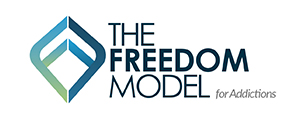Baldwin Research:
Addiction & Treatment
Research
Historical Remarks
Over Two Decades of Research Summarized in one Sentence
All these relationships are control model relationships, offering little in the way of the patient being in control. Once again turning to the expertise of Mayo Clinic, Mayo Clinic writes cognitive behavioral therapy helps patients become aware of inaccurate or negative thinking, so they can view challenging situations more clearly and respond to them in a more effective way. This begs the question who determines what is or is not "inaccurate or negative thinking?" Moreover, this is a very complicated question. Communications between a therapist and a patient are difficult, at best. First let's look at the patient's mind. The cognitive behavioral therapist's first order of business is to find out what is troublesome for the patient. There are numerous techniques to determine what the trouble is, e.g. confrontation, free association, empathy, non-confrontational questioning and so on. Whatever the technique, there are definitely three and perhaps four possible responses from the patient. One response is patients minimize their conditions so their conditions don't seem so bad. Another response is patients explain their conditions to the best of their ability without the benefit of clinical language to accurately describe their conditions. Still, another possible response is patients often exaggerate their conditions. Statistically, therapists have no better than a 33% chance of receiving the correct information. Furthermore, even if patients do supply the correct information, therapists have no way of knowing that they received the correct information, because no one can ever really know what is in another human's mind. For example, we know that many people avail themselves to counseling, therapy and treatment for reasons other than what they report to their professional therapists. Many seek treatment or counseling because the attention and empathy they receive from treatment and counseling make them feel more important, special and yes, even happy.
To further complicate Cognitive Behavioral Therapy there is a second human mind in the process, the therapist's. Cognitive behavioral therapists experience all the same mental, social, family, financial, career problems and personal insecurities as everybody else. What thoughts are going through their minds during a therapy session is anybody's guess. Furthermore, and like everybody else, all their thoughts are tainted and influenced by their human experience. Maybe the therapist is a teetotaler, i.e. has a bias against drinking alcohol, and the patient's perceived problem is drinking alcohol. In this case the therapist may be wrong to lead the patient to an abstinence solution when moderation might be more appropriate. Or maybe the therapist is hypersexual providing therapy for a hyper sexuality patient.
Then there are cognitive behavioral therapists that have preconceived notions about what inaccurate and negative thinking are. For example is acrophobia, the fear of heights, inaccurate and negative thinking? Is it an irrational (inaccurate and negative thinking) fear of high flying carnival rides? Some would think high flying carnival rides are dangerous and to be avoided at all cost. And based on the incident rate of accidents involving high flying carnival rides, avoiding such rides may not be all that irrational.
Moreover, the therapist is in charge of the patient's solution and as such the therapist is leading the patient to a solution decided upon by the therapist. This is a classic control model therapy, i.e. the therapist is deciding what is "best" for the patient. Cognitive Behavioral Education provides an understanding of cognitive behavioral change principles, thereby offering a technique for guests to cognitively change their own behavior(s), as they choose. CBE Presenters, not teachers, present concepts of CBE by way of the 13th Edition of the Jude Thaddeus Program. While thousands of people responded very favorably to the CBE technique and the information presented in the 13th Edition, the Baldwin researchers remained skeptical of the technique and presentation because the CBE Presenters, by their act of presenting, introduced their own interpretation and possible bias. These skepticisms, then, provided the impetus to research and develop an educational system that offered learning without presenting (teaching).
Re-enter the Jude Thaddeus Academy, learning without teaching. The Jude Thaddeus Academy was developed for the purpose of learning about things that interested the students; it did not, nor was it designed to, modify behaviors. It was a method of learning that was natural, self-motivated; i.e. this is something I am interested in so it makes me happy to know more about it. It worked on the principle that the human mind is inquisitive about stuff that brings about happiness simply by the mind thinking about it. Yet the value of behavioral learning without teaching remained obscured for years by the control model.
The Mind is the Vehicle for Freedom!
Finally, in the 13th Edition it became clear that the Freedom Model was a "stand alone" concept. The Freedom Model laid bare the truth: human thought is universally unencumbered; human thought can be anything, at any time, the human chooses; the human mind is perfectly FREE.
Twenty-four years had passed and for the Baldwin researchers the completion of the 14th Edition has been their destination all along. Still, all the Editions along the way offered thousands upon thousands new opportunities for happier lives. Today behavioral learning without teaching is no longer veiled by the shroud of the control model; it is available to everyone; it is the basis for the 14th Edition; it is Cognitive Behavioral Learning tm.


